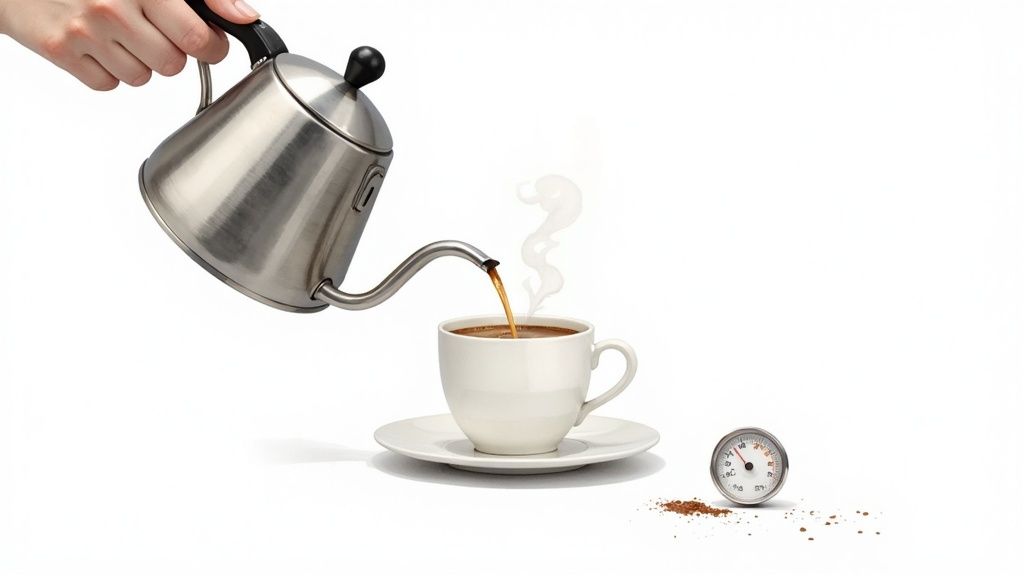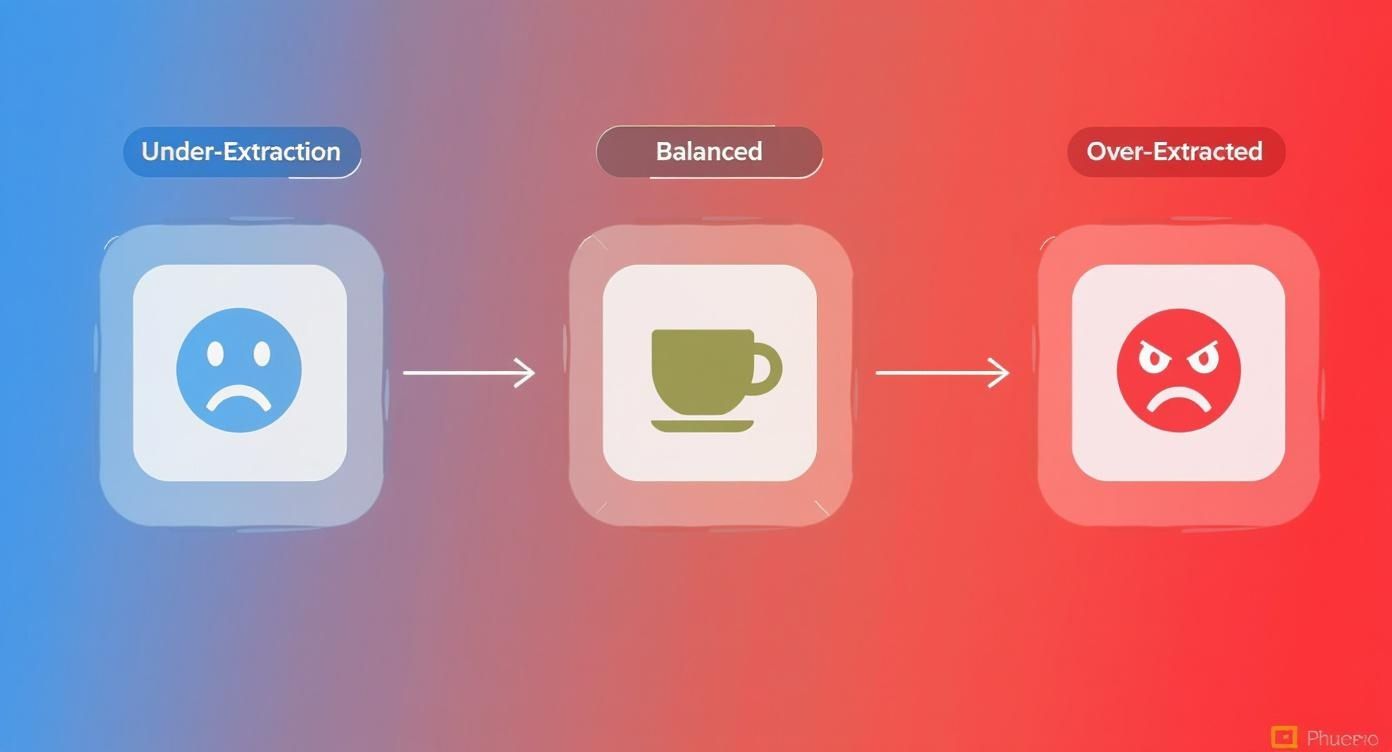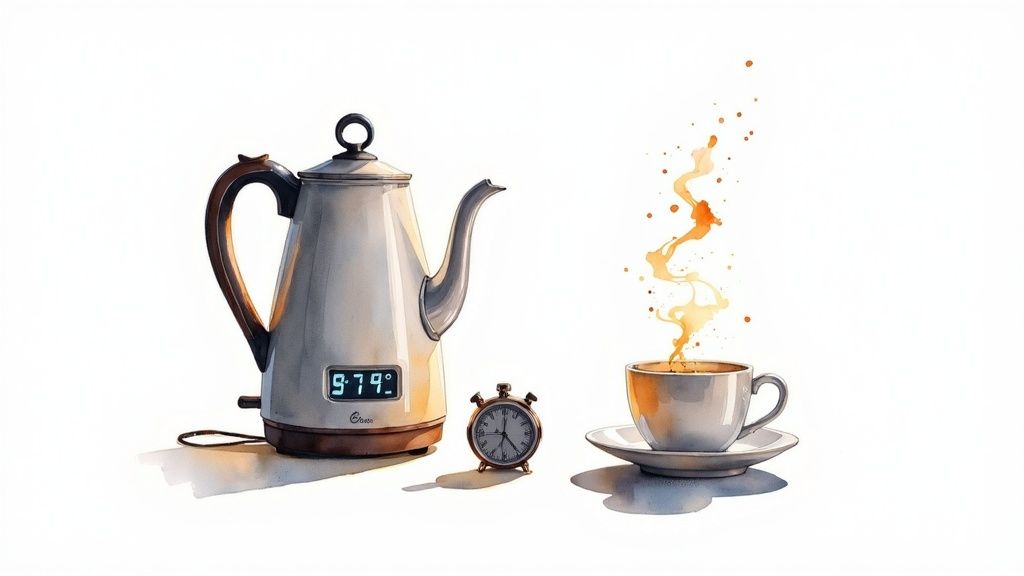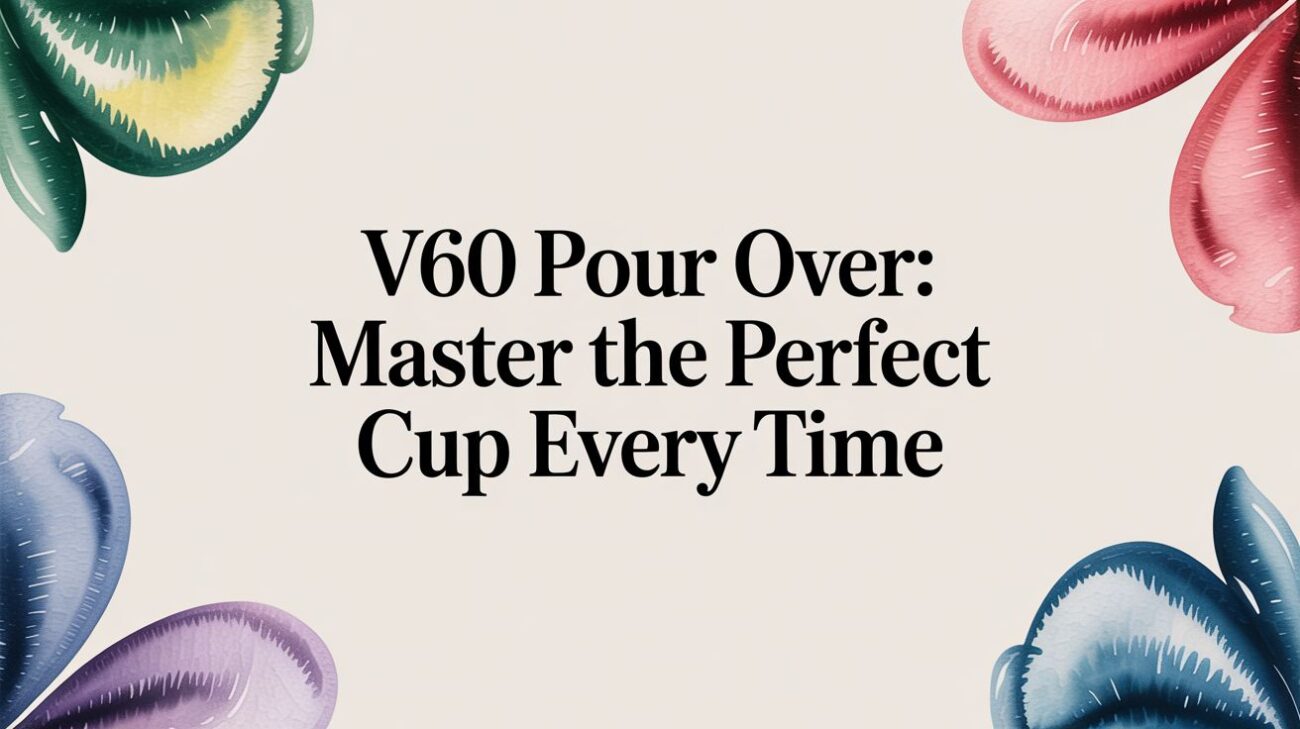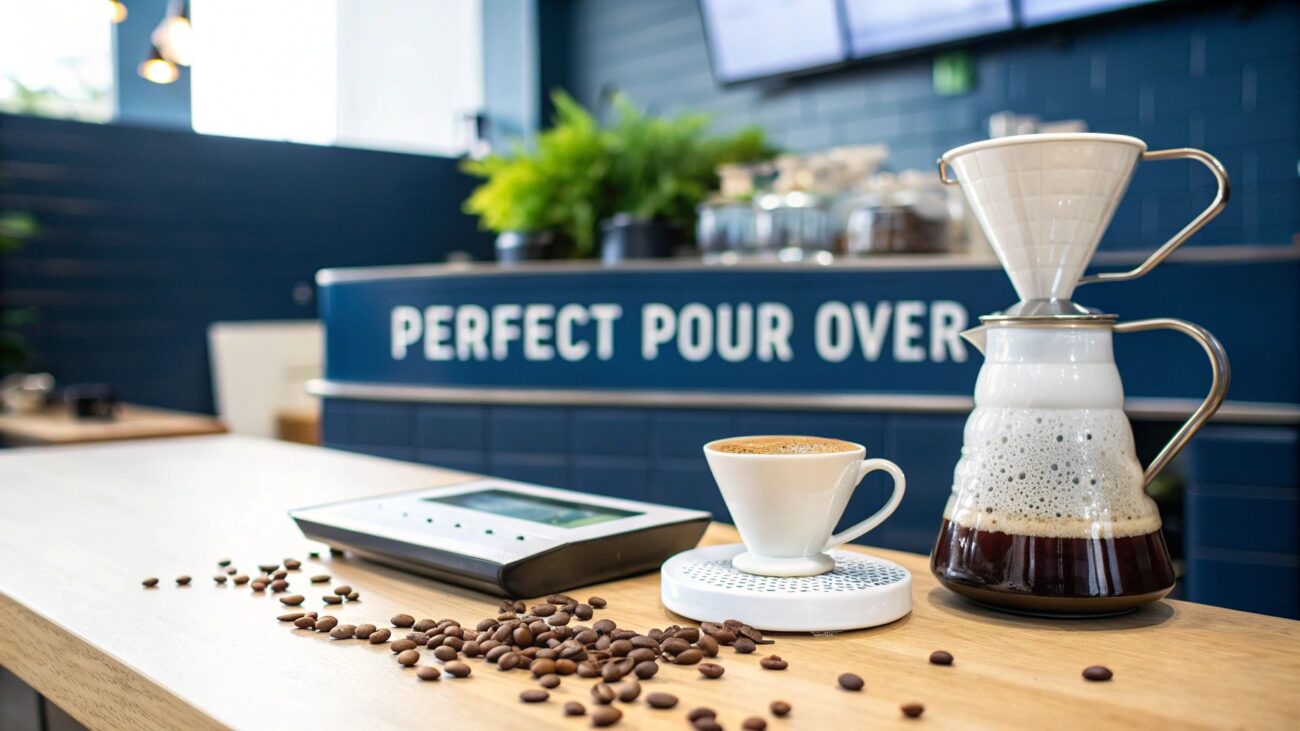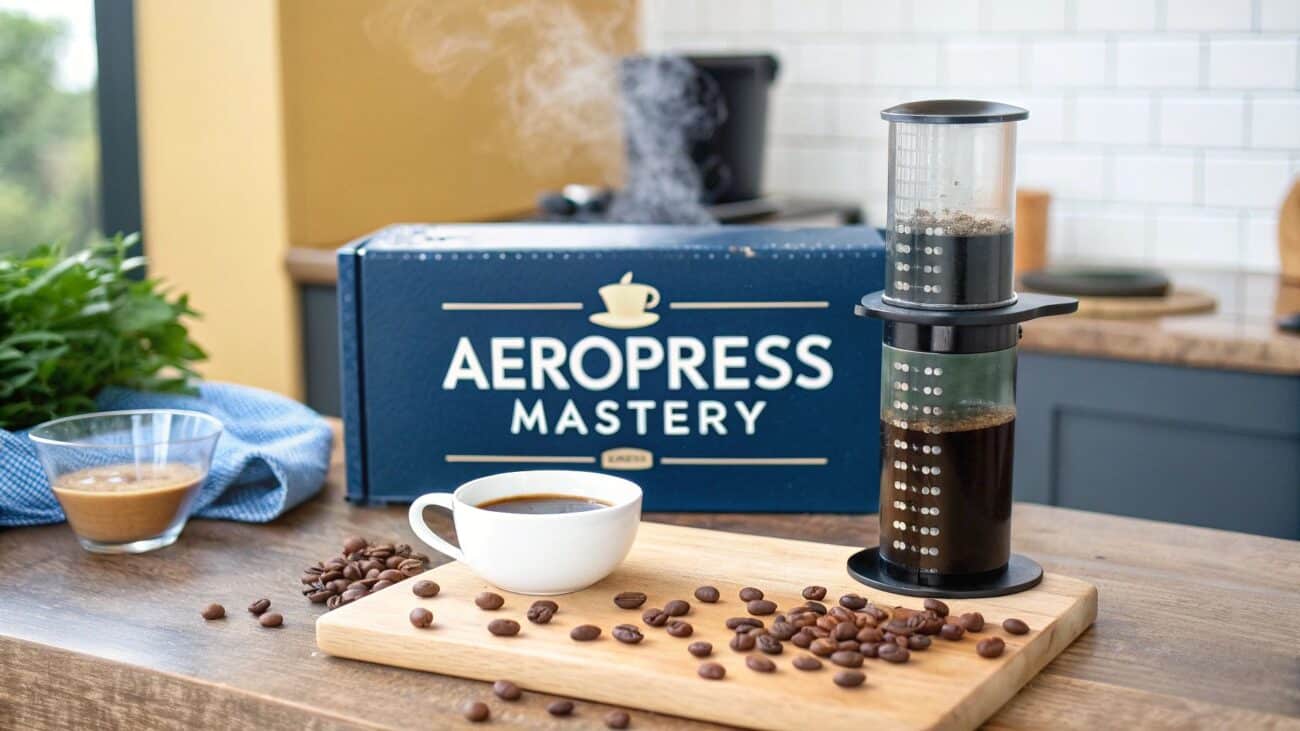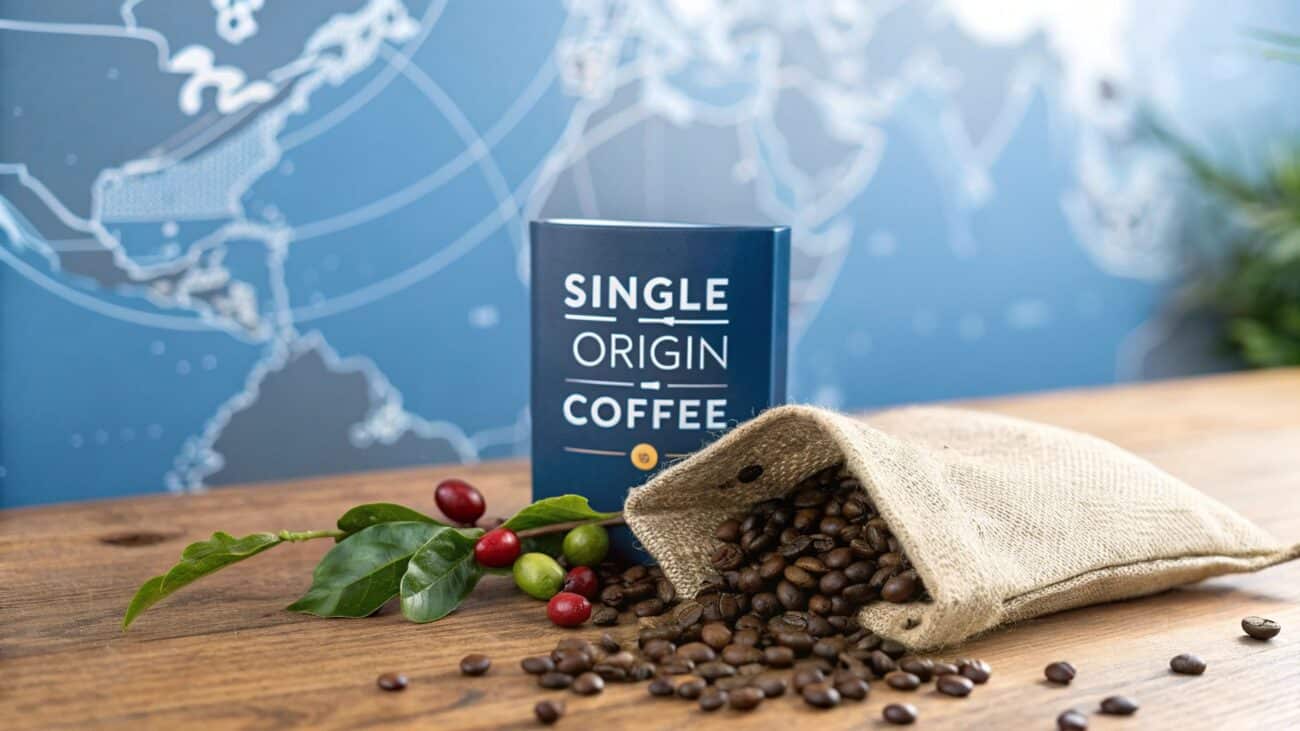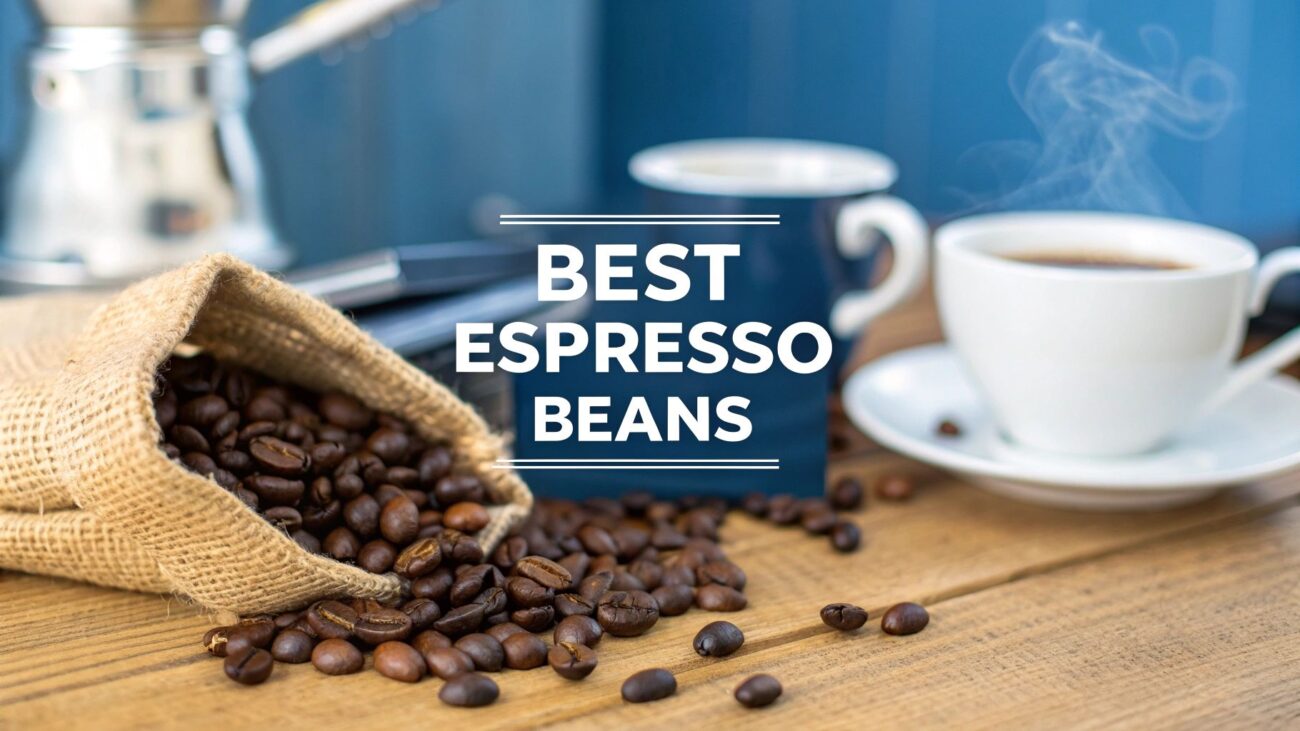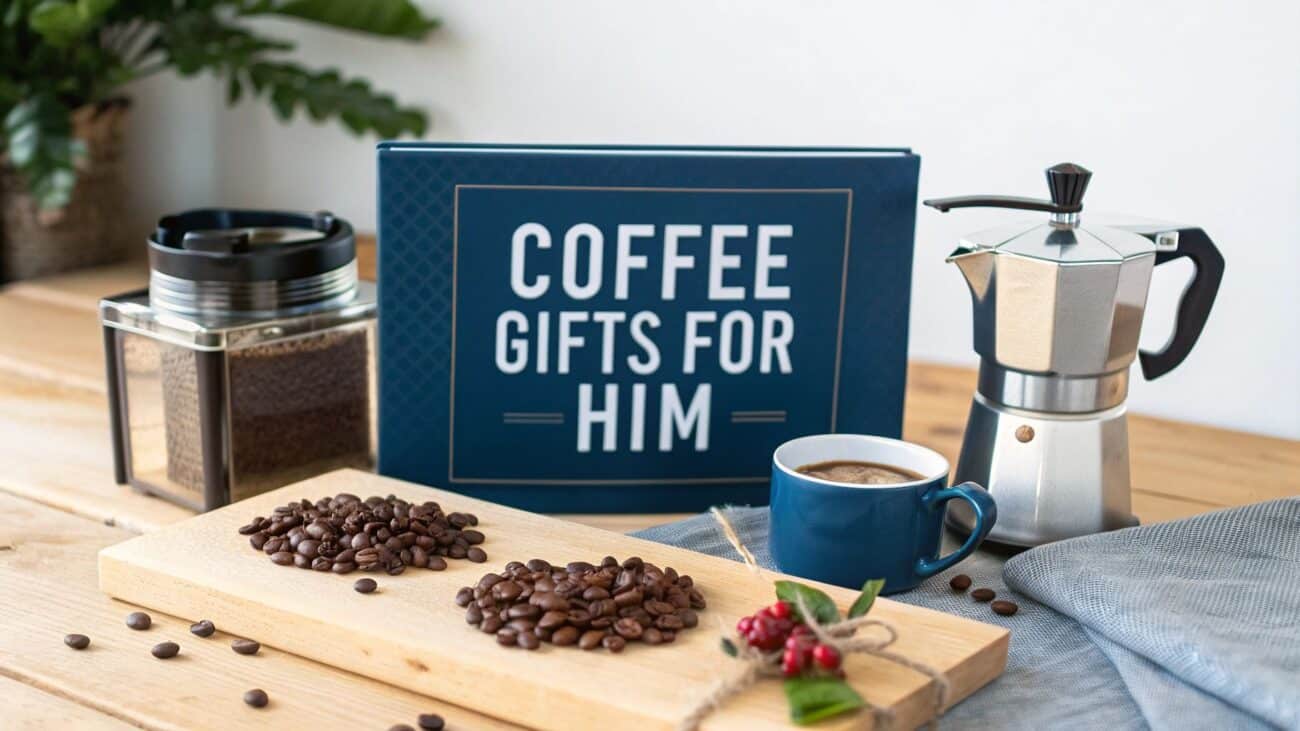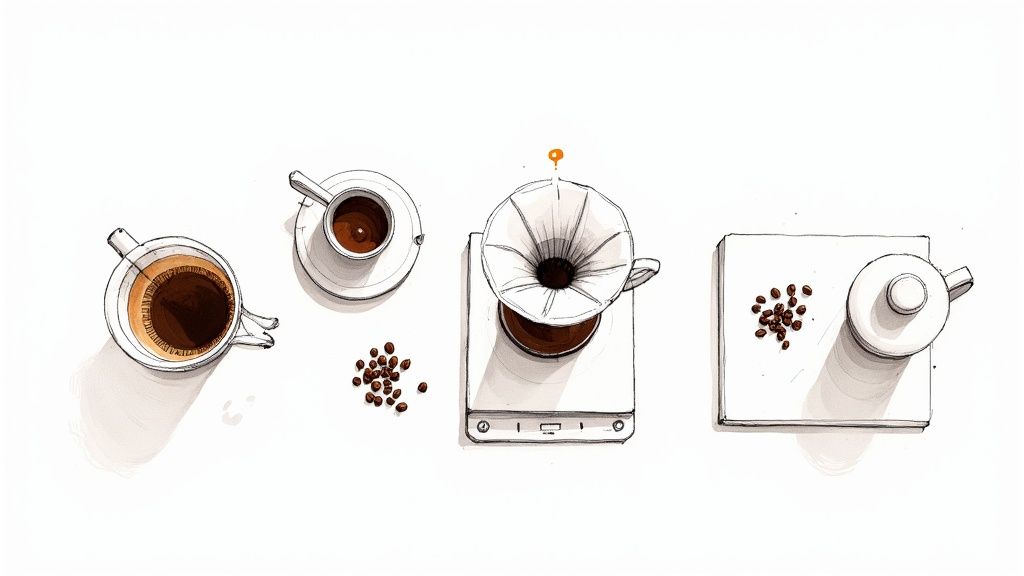Best Water Temperature for Coffee: A UK Guide

For the absolute best flavour from your coffee, you’ll want your water temperature sitting somewhere between 92°C and 96°C. This specific sweet spot is the key to avoiding the harsh bitterness you get from boiling water and the sour, weak taste from water that's too cool. Get it right, and you're on your way to a perfectly balanced and delicious cup, every single time.
Why Temperature Is Your Secret Brewing Weapon
The secret to a truly brilliant cup of coffee often lies in a detail many of us overlook: water temperature. Nailing this is the difference between a flat, lifeless brew and one that is absolutely bursting with flavour. Think of temperature as the volume knob for your coffee's taste.
If the water is too cold, it just doesn't have the energy to properly dissolve all the flavourful compounds locked away in the coffee grounds. The result? A weak, sour, and undeveloped taste, a classic case of under-extraction. The coffee simply never gets a chance to show you what it’s really made of.
On the other hand, if your water is too hot—especially at a full boil of 100°C—it will literally scorch the grounds. This is called over-extraction, and it aggressively pulls out all the bitter, astringent compounds that should have stayed behind. It completely masks the coffee's delicate notes, leaving you with a harsh and unpleasant aftertaste.
The Golden Range for Optimal Flavour
Hitting that perfect temperature window is what unlocks the best possible taste from your beans. In fact, the British Coffee Association pegs the optimal water temperature for brewing filter coffee in the UK at between 92°C and 96°C. This range ensures the coffee grounds are properly extracted, giving you a balanced flavour profile without any of that unwanted bitterness or sourness.
This 'golden range' provides just enough heat to dissolve the desirable sugars and acids while leaving the harsher, bitter elements behind. Mastering this simple variable is one of the easiest ways to seriously elevate your home brewing game.
If you're keen to explore more ways to perfect your technique, you might find our complete guide on how to brew coffee really helpful.
Understanding Coffee Extraction and Temperature
So, why is 94°C different from a full 100°C boil? It all comes down to extraction—the delicate art of dissolving flavour from your coffee grounds into water. Think of it like making a proper pot of tea. If the water's just lukewarm, you get a weak, grassy brew. But if it's scalding hot, the tea turns harsh and bitter. Coffee is much the same.
Water is the solvent in this whole process, and its temperature dictates how well it pulls out different compounds from the coffee. We’re talking about the acids, sugars, and oils that come together to create the unique taste and aroma we’re all chasing. Nailing the temperature is absolutely critical for a balanced, delicious cup.
The Problem with Cold Water: Under-extraction
When your water is too cool (usually anything below 90°C), it just doesn't have the energy to dissolve all the good stuff. This is what we call under-extraction.
The first things to dissolve are the bright, fruity acids. If the extraction stops there, you’re left with a cup that tastes noticeably sour, sometimes even salty, and distinctly undeveloped. It’ll feel thin in your mouth, completely missing the satisfying sweetness and body that tells you a coffee is well-made. It’s like pulling a cake out of the oven too early—all the ingredients are there, but they haven’t had a chance to properly come together.
Just as with coffee, other beverage industries also understand that the perfect brew starts with careful attention to water parameters, highlighting water's crucial role in the brewing industry.
The Danger of Hot Water: Over-extraction
On the flip side, water that’s too hot (especially at a rolling boil) gets far too aggressive with the grounds. We call this over-extraction.
Sure, hot water is great at pulling out the sweet sugars and pleasant acids, but it doesn’t know when to stop. It keeps on dissolving the heavier, less pleasant compounds that are much better off left behind in the grounds. The end result is a cup that tastes overwhelmingly bitter, dry, and hollow, completely masking the coffee's true character.
Of course, this whole process is also tangled up with how fine or coarse your coffee is ground. To get the full picture, take a look at our comprehensive coffee grind size guide and learn how to balance it perfectly with your temperature control.
Matching Temperature to Your Brewing Method
There’s no single magic number that works for every coffee maker out there. The real secret to turning good coffee into great coffee is tailoring your water temperature to your specific equipment. Where you land within that sweet spot of 92-96°C depends entirely on how your chosen method works.
Think of it this way: brewing methods that keep the water and coffee grounds in contact for a longer time, like a French press, need a gentler touch. These full-immersion styles benefit from a slightly cooler temperature, perhaps around 92-93°C. Using water that's too hot during a four-minute steep is a fast track to over-extraction, leaving you with a bitter, muddy cup.
Higher Temperatures For Faster Brewing
On the flip side, faster brewing methods often thrive at the higher end of the temperature scale. A quick pour-over, for instance, needs that extra heat to pull all the desirable flavours from the grounds in its short contact time.
This infographic neatly shows the relationship between temperature and your final cup, mapping the journey from sour and under-extracted to bitter and over-extracted.
As you can see, finding that balanced middle ground is exactly what we're aiming for. It's the key to a delicious, well-rounded brew.
A perfect example is the V60, a device celebrated for producing exceptionally clean and bright coffees. You can dive deeper into this with our guide to V60 coffee pour-overs, which explains how hotter water helps unlock those delicate floral and fruity notes. The AeroPress is another versatile brewer where temperature plays a massive role; hotter water gives a more traditional, robust flavour, while cooler water can produce a much smoother, sweeter result.
The key takeaway is simple: the longer the water touches the coffee, the more extraction happens. Adjusting your temperature gives you direct control over this process, preventing bitterness in slow brewers and ensuring a full, rich flavour in fast ones.
Exceptions To The Hot Water Rule
Of course, there are always a few exceptions. A stovetop moka pot, for example, creates its own pressurised, high-heat environment, which means you have far less direct control over the exact temperature.
And then you have the ultimate outlier: cold brew. This method flips the script completely, swapping heat for time. By steeping coarse grounds in cold water for 12-24 hours, you end up with a smooth, low-acid concentrate. Here, time does all the heavy lifting, proving that you don't always need heat to achieve a flavourful extraction.
How Roast Level Changes the Temperature Game
Just when you think you’ve got temperature dialled in, another factor jumps into the mix: the roast level of your beans. It’s a huge one. Not all coffees are created equal, and their time in the roaster completely changes how they behave when they meet hot water.
Getting your head around this is what separates a good brew from a truly great one.
Think of it like cooking. A light roast is the coffee equivalent of a rare steak—it’s dense, less soluble, and needs a fair bit of energy to unlock all those complex, delicate flavours. To properly extract the bright, fruity, and floral notes these coffees are prized for, you need to hit them with water at the higher end of the scale, somewhere around 95-96°C.
On the flip side, a dark roast is more like a well-done steak. The roasting process has already made the bean more porous and brittle, which means its flavours are much easier to pull out. If your water is too hot here, you’ll scorch the grounds and end up with a harsh, bitter brew. For these bolder, chocolatier coffees, you’ll get far better results by dropping the temperature down to around 92-93°C.
Adjusting Temperature for Your Beans
Making this small adjustment is the secret to getting the best out of any coffee you buy. It’s all about adapting your technique to suit the bean’s unique character.
- Light Roasts: These beans are physically harder, with a more intact cellular structure. Hotter water gives you the power needed to get inside the grounds and dissolve those bright, acidic, and nuanced flavours.
- Dark Roasts: These beans are more fragile with a more open structure. Cooler water offers a much gentler extraction, coaxing out the deep, rich flavours without blasting the grounds and releasing unwanted bitterness.
If you're keen to dive deeper into how roasters develop these characteristics in the first place, you can learn more about the different coffee roasting profiles in our detailed guide.
The takeaway is simple: use hotter water for light roasts to unlock complexity, and cooler water for dark roasts to prevent bitterness. This small change gives you ultimate control over the final cup.
Nailing this moves you beyond generic brewing advice and into the realm of truly intentional coffee making. You’re no longer just following a recipe; you’re listening to your beans and giving them exactly what they need to shine.
Practical Ways to Control Water Temperature
You don’t need a fully kitted-out science lab to nail the perfect water temperature for your coffee. Getting this crucial step right at home is much easier than you’d think, no matter what equipment you're working with.
For any serious UK coffee lover, the gold standard is a temperature-controlled kettle. These brilliant devices let you dial in your target temperature with pinpoint accuracy, completely taking the guesswork out of the equation. It's an investment in consistency, ensuring you can hit the exact heat your beans crave, every single time.
The Simple 'Boil and Wait' Technique
No fancy kettle? No problem at all. The simplest trick in the book is to boil your water and just let it sit for a moment. A full boil reaches 100°C, which is far too hot, but the temperature drops surprisingly quickly once the kettle clicks off.
With most standard kettles, waiting just 30 to 60 seconds is enough to bring the water down into that sweet spot of 92-96°C. You can use a thermometer to check your timing at first, but this simple pause is a massive leap towards a better brew.
Remember this: Never pour water straight from a boiling kettle onto your coffee grounds. That brief moment of patience is what separates a harsh, bitter cup from a beautifully smooth and balanced one.
Don't Forget to Preheat Your Gear
Here's one final, crucial step that so many people skip: preheating. Cold ceramic or glass acts like a heat thief, instantly pulling warmth from your brewing water. This is a classic case of temperature shock.
This shock can drop your water temperature by several degrees before it even gets a chance to properly saturate the grounds. To prevent this, just give your brewer, filter, and mug a quick rinse with hot water before you start. It’s a tiny step that stabilises the whole brewing environment, making sure your carefully heated water stays in the perfect zone from the first pour to the last drop.
Your Coffee Water Temperature Questions Answered
To wrap things up, let's tackle some of the most common questions we hear from coffee lovers across the UK. Getting the water temperature just right often involves a bit of trial and error, so these quick answers should help you fine-tune your technique and brew with more confidence.
Can I Just Use Boiling Water Straight from the Kettle?
While it’s tempting to pour water straight from a boiling kettle for speed, it's generally a bad idea. Water at a full boil (100°C) is far too aggressive and can easily scorch your delicate coffee grounds. This leads to a harsh, unpleasantly bitter flavour that masks all the good stuff.
The fix is incredibly simple: just let your kettle sit for 30-60 seconds after it clicks off. This brief pause is all it takes for the temperature to drop into that sweet spot of 92-96°C, protecting the coffee’s nuanced flavours.
Does Hard Water Affect the Ideal Temperature?
The hardness of UK tap water mainly influences which flavour compounds get extracted, rather than changing the ideal temperature itself. Very hard water can sometimes mute a coffee's bright acidity, which can make the final cup taste a bit dull or flat.
Your best starting point remains the 92-96°C guideline. However, if you suspect your local water is holding your brew back, giving filtered water a try can lead to a cleaner, more vibrant flavour profile.
Espresso is a different beast entirely, relying on intense pressure as much as heat. Most quality home and commercial machines are designed to operate in a precise, slightly cooler range of 90°C to 94°C. This temperature allows for a fast and efficient extraction without burning the finely ground coffee.
If you're curious about mastering this specific brewing style, our guide explains how to make an espresso at home and get that proper café-quality taste. It's a perfect example of just how critical precise temperature control becomes for different coffee preparations.
At Seven Sisters Coffee Co, we believe that exceptional coffee starts with great beans and the right knowledge. Explore our range of freshly roasted, ethically sourced coffee to elevate your home brewing experience.

